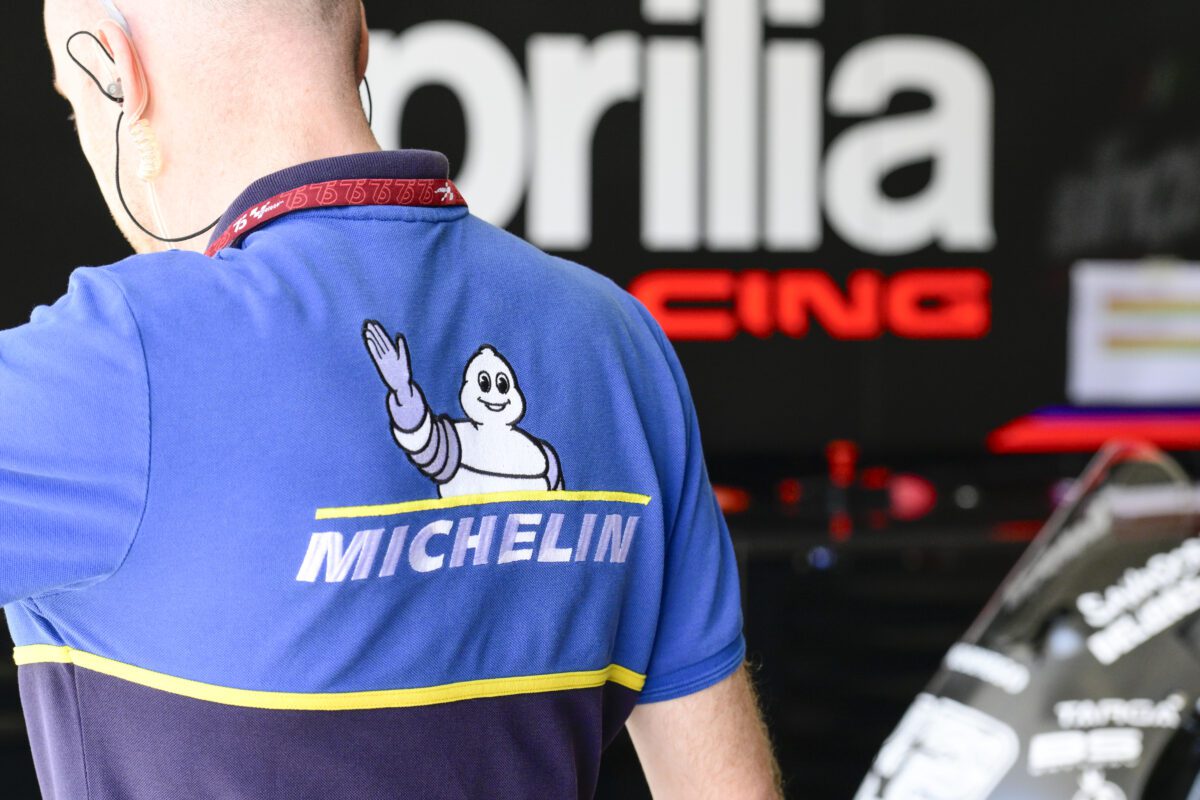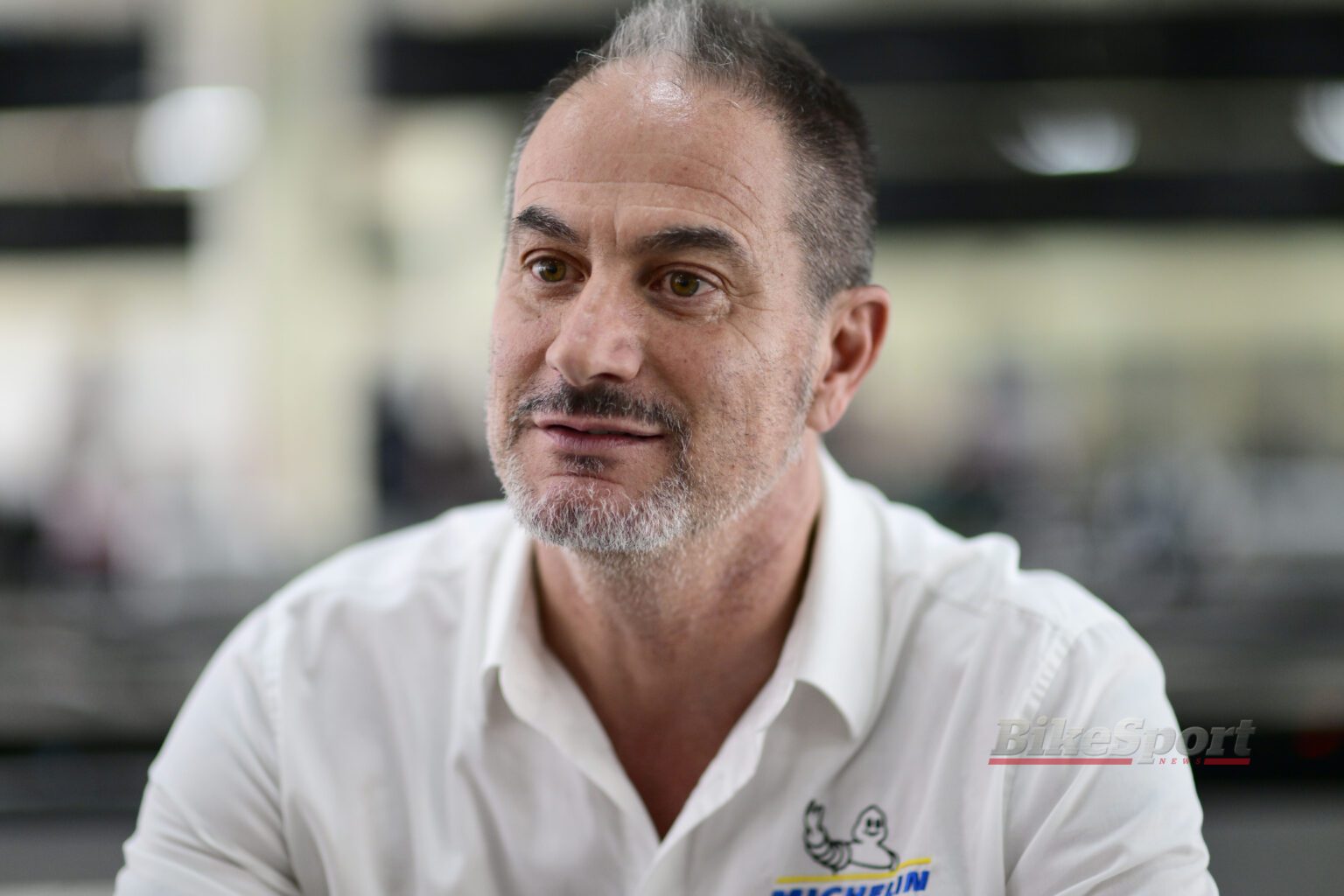Piero Taramasso responds to claims that Michelin is to blame for Jorge Martin's Sepang Test crash.
The 2025 MotoGP World Championship has not reached Round One and Michelin has already come under fire.
Some comments illuded towards Jorge Martin's crashes on Wednesday being Michelin's fault. The reigning World Champion crashed twice on the morning of the opening day of the Sepang Test.
It was the second crash which saw Martin fracture his right hand and left foot. Since the crash, Martin had been declared unfit for the remainder of the test and may not return until the opening round of the year.
Aprilia CEO, Massimo Riviola, told the media on Wednesday that the team's data showed that the crash was not due to a rider or bike error. However, some of his comments pointed towards Michelin, but he never explicitly blamed the French company.
“When there are these accidents we always have to look for the reason and logically the tyres are part of the bike and the whole system,” Michelin's Piero Taramasso told Sky Italy on Thursday.
“We looked at Jorge's rear tyre: as far as traceability is concerned, this tyre was manufactured last year, it was never heated and therefore had all the qualities to be a high-performance tyre and that's why we brought it here.
“We looked at the tyre after the runs that Jorge did and it worked well: you can see it from the look, it worked both left and right. When tyres don't work they always have that shiny, smooth look and that wasn't the case for Jorge's tyre.
“Then also analysing the lap times: he did a run for the first four-five laps on the times of the other riders, in the second run he was faster than riders like [Francesco] Bagnaia and [Brad] Binder. And then he had the two crashes: it's a bit strange that he kept it for 13 laps; usually, when a tyre doesn't work the riders come back and ask to change it after two-three laps.
“And as Massimo Rivola rightly said, the pressures and temperatures were fine. Everything was working well from a tyre point of view. For us, from what we have seen so far and the data we have, there are no problems.”

Friday Updates from Michelin and Piero Taramasso:
Since these original statements on Thursday Piero Taramasso met with the media on Friday and discussed the issue further.
“Thanks to Aprilia, they gave us all the data,” said Taramasso.
“In the last hour, we were able to analyse all the data. There is a lot of data so it takes time for these things. At the beginning, Massimo [Rivola] said the tyre temperature was okay, but this was [surface] tyre temperature, which is very variable, it depends on the slide, the spin of the bike.
“The rear temperature, the [value] we use to understand if the tyre works or not, is the inner layer temperature; for instance it’s the data coming from the McLaren sensor."
The temperature which the team's use to determine tyre temperature is what was referred to as the 'cavity temperature', which is the temperature of the air inside the tyre. Taramasso explained that the 'cavity temperature' is not the same as the inner layer temperature.
He also explained that it is normal for there to be a difference between the different temperatures taken from one tyre.
"The conclusion is clear: Jorge [Martin], when he left the box for the last run before the crash, the tyre temperature was 15 degrees less," Taramasso confirmed.
"So, 15 degrees is quite a lot. Also, at the moment he crashed, we compared his tyre temperature with Marco Bezzecchi’s rear tyre temperature – because it’s the same bike, the same time with the medium rear tyre, and it was 15 degrees less.
“So, this is for sure a big parameter that [combined] with the track conditions that, remember, was very slippery, was windy, was cold, was only 30 degrees, here normally is 50 degrees, we had rain overnight. So, the bad condition, and the tyre not ready, that’s why the crash happened.”










